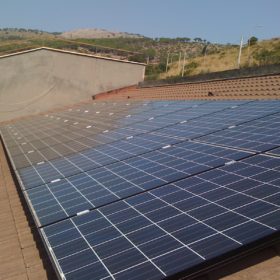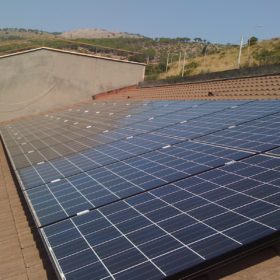Italian homeowners can now install PV systems for free

The Italian government has raised the tax breaks it offers for building renovations and energy-requalification projects – potentially including storage-backed rooftop PV systems – to 110%. The new measure is part of the Relaunch Decree, which is a package of guidelines aimed at reviving the Italian economy in response to the Covid-19 crisis.
The Italian government has allocated €55 billion ($60 billion) in stimulus perks through the Relaunch Decree on Economic Stimulus Measures to help revive the country’s economy as it slowly exits its Covid-19 lockdown.
The measures include an increase in the so-called “eco-bonus” for building-renovation projects from 65% to 110% and a jump in support for PV installations and storage systems associated with such renovation projects, from 50% of costs to 110%.
The decree was published in the Italian government’s official journal on Wednesday and is already in force. The Italian parliament will have 60 days after the initial publication of the measures to introduce amendments to the law. According to these new provisions, the eco-bonus – which is an income tax (IRPEF) rebate – will be applied to all expenses incurred between July 1, 2020, and Dec. 31, 2021.
Three categories
The authorities will apply the 110% tax break to three types of renovation projects, including building insulation, the replacement of cooling and heating systems in multi-unit apartment buildings, and the replacement of cooling and heating systems in single-family homes. All PV projects linked to building renovations that will not be included in these categories will not be granted the super eco-bonus, but will still be awarded the 50% tax break.
Homeowners will have three ways in which to secure the eco-bonus: through the tax deduction over a period of five years, via the transfer of the tax-deductible allowance for installers and product suppliers, and through invoiced discounts. With the first option only, homeowners will have to accept the initial investment costs, while with the other two options, no initial spending will be required.
The Italian government has established a maximum price of €2,400 per kilowatt installed for PV systems and €1,000/kWh for the storage systems. This means that homeowners who are willing to build projects with high-quality components may have to face additional expenses – especially for storage.
All PV systems or solar-plus-storage generators installed with the super 110% tax break will be allowed to inject surplus power into the grid, but not under the Italian net-metering regime, known as “Scambio sul posto.” This means that the surpluses will be given to Italian energy agency Gestore dei Servizi Energetici (GSE) for free. It also means that sizing systems with high self-consumption rates, or the installation of storage systems, may be more profitable options.
Complex projects
“For the sector, the Relaunch Decree is certainly a great opportunity for the spread of photovoltaics on the roofs of Italian homes,” Paolo Rocco Viscontini, president of PV association Italia Solare, told pv magazine.
Viscontini emphasized that the tax breaks are associated with sustainable-building projects, and said that homeowners should turn to qualified companies who work in cooperation with thermo-technical experts. “It is certainly an opportunity to qualify the sector with integrated strategies based on quality and professionalism, as an association we will work to communicate the need for this type of approach,” he explained.
Viscontini also stressed the importance of maintaining the provisions beyond the end of 2021, while reducing the the level of the tax breaks to allow companies to invest in new professional resources. “This can happen if … at least five years is guaranteed,” he stated. “Only in this way do we believe that skills and above all stable jobs can be created.”
The 50% eco-bonus for PV associated with sustainable-building projects – together with the Scambio sul posto – has been the main driver for solar energy development in Italy over the past few years.


